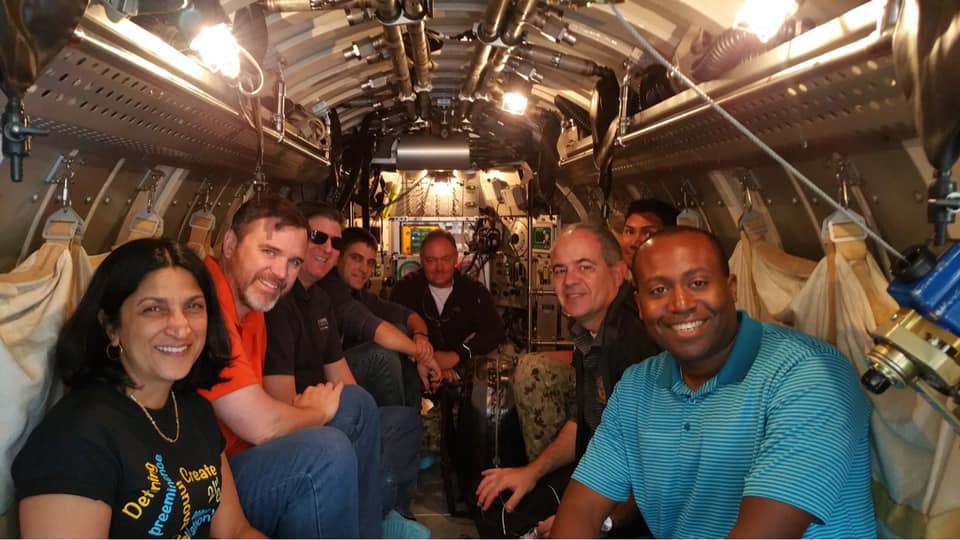In light of the current news story about the lost submarine, it seemed like
Submarine accidents which result in the submarine careening to the sea bottom are spectacular in Hollywood movies and video games, but they do not happen often in real life. In fact, for the U.S., we have not lost a submarine to the depths since 1968 when USS Scorpion was lost with 99 souls due ( most likely) to an inadvertent activation of a battery or a torpedo. Prior to that, in 1963, USS Thresher was lost with 129 souls due to ( most likely ) a piping failure during a deep dive. Due to actions taken as a result of lessons learned from those two mishaps, the U.S. has not had a major submarine loss since then. The safety record for U.S. Submarines since 1968 has been remarkable, and the envy of other countries.
Yeah, but what if?
To be prudent, the U.S. must assume that there will be submarine accidents in the future, even if they are not U.S. submarines. For this reason, the U.S. continues to maintain a force dedicated to the rescue of downed submarines. Undersea Rescue Command (URC) is the U.S. Navy’s official command for the rescue of sailors during a submarine casualty anywhere in the world. If you would like to learn more about this command, you can read about it here.
The blog author has had some personal experience working with the Undersea Rescue Command, and all comments that follow are the authors personal opinions, and not an official opinion of the U.S. Navy or Applied Technology Institute. In case you missed that, please go back and read it again.
Two significant issues that confront the Undersea Rescue Command are funding and localization.
The funding issue arises from the fact that our submarines are so safe, and our safety record is so good, there is a hesitance to pay too much attention ( and funding ) to an organization which may not ever be called into service. Unfortunately, there is not much the technical community can do about that; it will have to fall upon the Public Relations Office at U.S. Navy.
Localization, however, is a problem which the technical community can help solve. When a submarine goes to the bottom, the Undersea Rescue Command jumps into action, and reports to the vicinity of the accident very quickly. Unfortunately, the Undersea Rescue Command cannot start their rescue mission until the precise location of the sunken submarine is known, and that is often a difficult problem. Until the submarine is located, the rescue can not actually begin. Often, in exercises, or in other countries, by the time the submarine is located, it has become a recovery mission rather than a rescue mission.
So, how can we simplify the task of locating a downed submarine? Some of the answer lies in the concept of operations, or things that a distressed submarine can do to facilitate the search for them. Some of the answer lies in advances in sonars and sonar signal processing. And the rest of the answer lies in innovative new ideas, for example, using AUVs or UUVs to find distressed submarines ( cool idea ).
Applied Technology Institute is offering several courses in the coming months that will help you brush up on your skills, so that you can apply them to this problem. You can find information about our Sonar Signal Processing course, and register for the course here. Additionally, you can find information about our Passive and Active Acoustics Fundamentals course, and register for the course here. Lastly, a full listing of ATI’s Acoustics and Sonar Engineering Courses ( including AUV and UUV courses ) can be found here. If you are interested in a course which is not currently on the schedule, please let us know, so we can try to schedule an offering soon.
As I said earlier, the author has had the pleasure of working with the Undersea Rescue Command several years ago, and was very impressed with the hard work and dedication exhibited by all members of their team. The following picture shows me and the rest of the JHU/APL Team that worked with the URC. We are posing inside of the Pressurized Rescue Module which travels to the distressed submarine to perform the rescue. Although no one would ever want to experience being on a submarine in distress, they should feel encouraged that a team as dedicated and qualified as URC is on the job.
